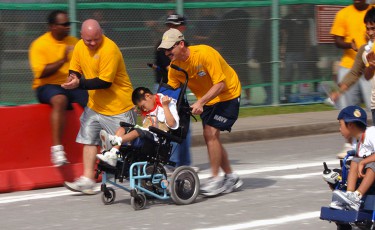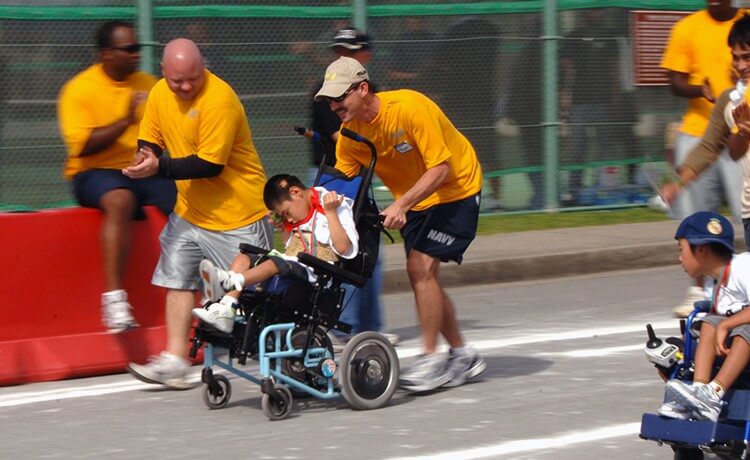This workout program is designed to give physical educators the tools needed to increase mobility, strength, and endurance for children with cerebral palsy (CP). Suggestions about body characteristics, stretching ideas, and workout strategies will also be presented. We share four complete workout programs designed on a continuum from less able to higher functioning such as for children who use wheelchairs, walkers to crutches or canes.

As with any exercise program, intensity, duration, and frequency need to be optimized.
To help ensure the endurance component, children should maintain their heart rate at 60 to 80% of their max for 35 minutes. Note: if students are exercising in a wheelchair or lying horizontal, reduce their maximum heart rate by 20 to 30 beats per minute. For example, a girl 10 years old who uses a wheel chair, would have a target range of 220 – 20 or 30 = 190 or 180 x .6 to .8 = 114 to 152 or 108 to 144 beats per minute. Exercises should be three or more times a week. Remember, when doing weight lifting, move quickly from set-to-set or machine-to-machine to help maintain a higher heart rate.
Key Aspects to Remember and Look For

